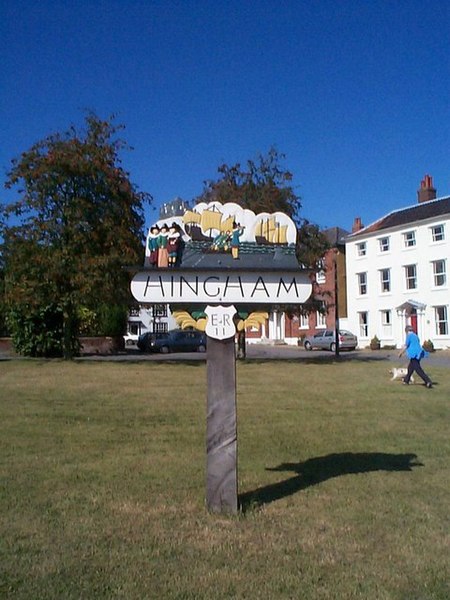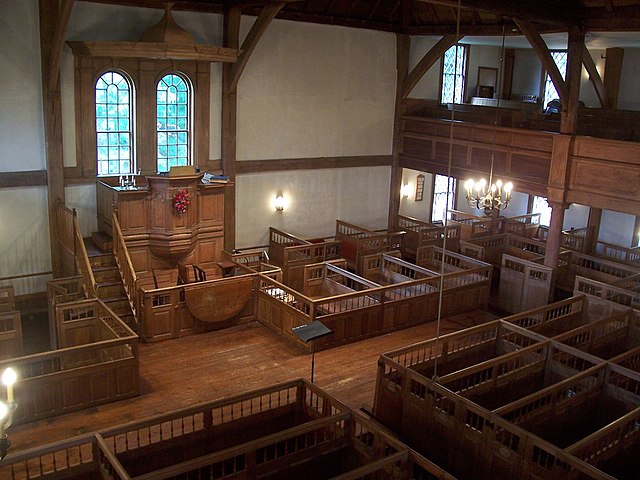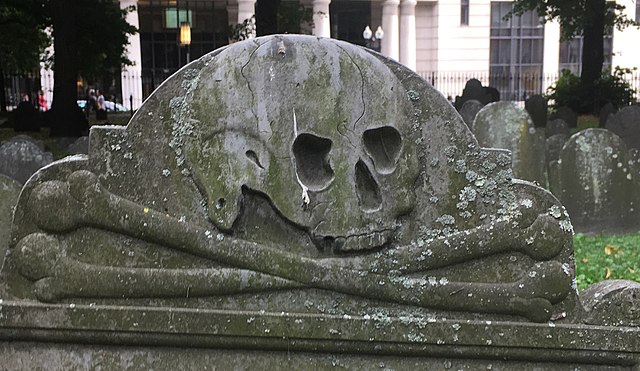Puritan migration to New England (1620–1640)
The Puritan migration to New England was marked in its effects from 1620 to 1640, declining sharply afterwards. The term Great Migration can refer to the migration in the period of English Puritans to the New England Colonies, starting with Plymouth Colony and Massachusetts Bay Colony. They came in family groups rather than as isolated individuals and were mainly motivated by freedom to practice their beliefs.
Town sign for Hingham, Norfolk, England showing Puritans who left to found Hingham, Massachusetts
Pilgrims Going to Church by George Henry Boughton (1867)
The Puritans were English Protestants in the 16th and 17th centuries who sought to rid the Church of England of what they considered to be Roman Catholic practices, maintaining that the Church of England had not been fully reformed and should become more Protestant. Puritanism played a significant role in English and early American history, especially during the Protectorate.
Gallery of famous 17th-century Puritan theologians: Thomas Gouge, William Bridge, Thomas Manton, John Flavel, Richard Sibbes, Stephen Charnock, William Bates, John Owen, John Howe and Richard Baxter
The Westminster Assembly, which saw disputes on Church polity in England (Victorian history painting by John Rogers Herbert).
Interior of the Old Ship Church, a Puritan meetinghouse in Hingham, Massachusetts. Puritans were Calvinists, so their churches were unadorned and plain.
Death's head, Granary Burying Ground. A typical example of early Funerary art in Puritan New England






